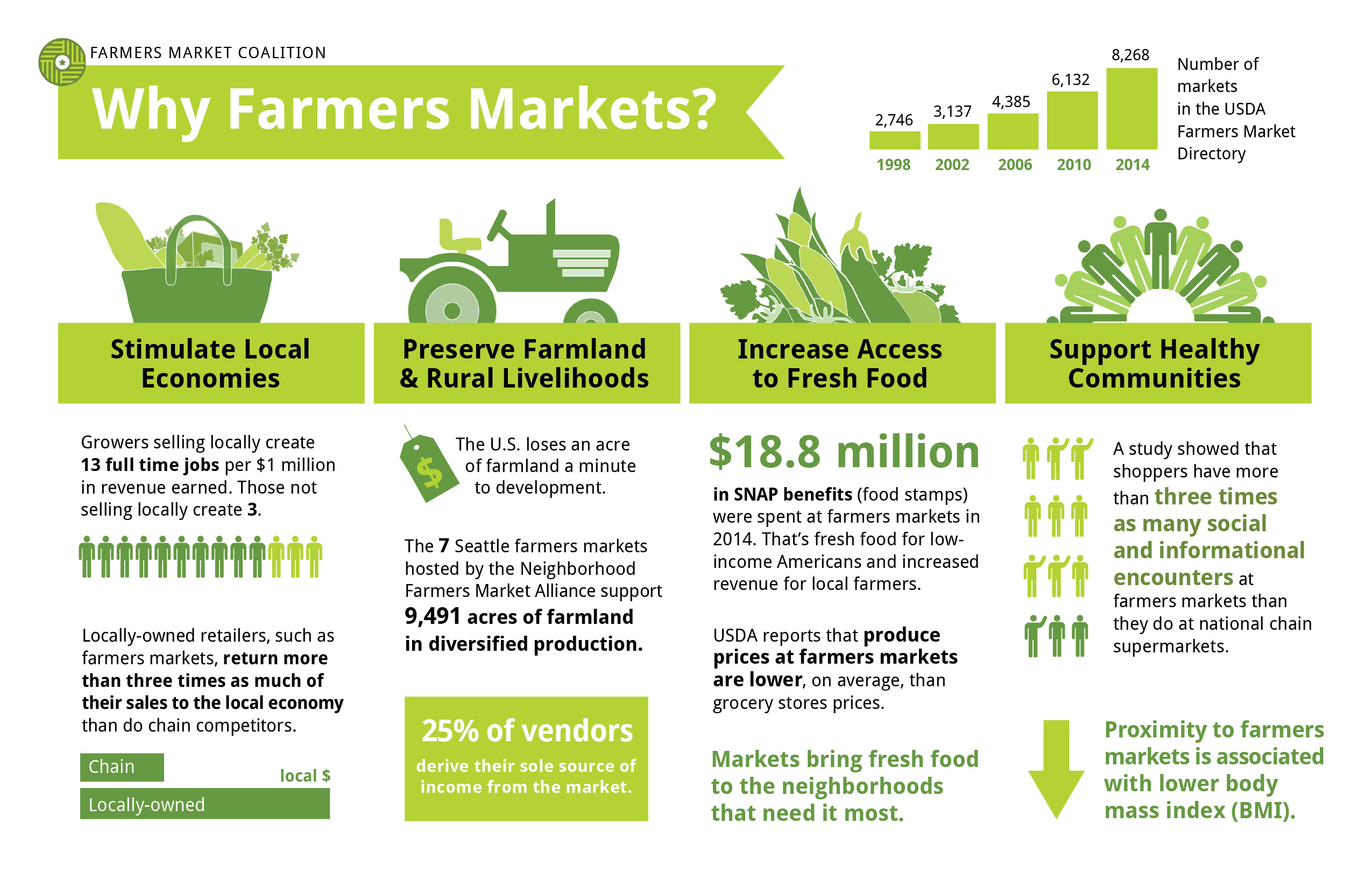The number of listings in the USDA’s National Farmers Market Directory has grown 3.6 percent in the past three years to nearly 8,150 farmers markets. One of those markets is the Fallbrook Farmers Market, a small but thriving Nebraska venture that FCSAmerica has helped incubate since it opened near our Lincoln office five years ago. In that time, I have watched the Fallbrook Farmers Market make a real difference in the north Lincoln development for which it is named.
 Image courtesy of farmersmarketcoalition.org
Image courtesy of farmersmarketcoalition.org
Hundreds of people attend the Thursday evening market, enjoying a mix of entertainment, shopping and mingling. Area businesses have been discovered in ways that would be nearly impossible with traditional marketing strategies. One restaurant that was just surviving before the farmers market opened grew into one of the most popular dining spots in Lincoln. Young and beginning producers have found the smaller, more intimate market ideal for honing customer service skills and identifying possible niches before venturing into larger markets where the stalls are more costly and the competition more plentiful.
Outsiders look at a market like Fallbrook’s and often want to do something similar for their community or neighborhood. But when people ask, I tell them that operating a farmers market is rarely easy, and making it a success is even tougher. National Farmers Market Week, which ends Aug. 8, offers an opportunity to repeat some lessons I have previously shared.
- Choose the right location. Setting up booths in a parking lot, as some have, will rarely work. People go to farmers markets for the ambiance. For some, the experience is a bigger draw than the fresh produce. The Fallbrook Farmers Market is well situated in a nice neighborhood that pairs green space with retail options. People come with their strollers and dogs, expecting a relaxing, entertaining evening. It’s why they’re willing to pay higher prices than they typically find for produce in a grocery store.
- Choose the right time. Farmers often sell their produce at more than one market during a week. If they have to harvest on a Tuesday, their produce won’t be good for weekend markets. Fallbrook’s Thursday evening market is as early in the week as producers want to harvest. Later in the week and Fallbrook would be in direct competition with larger farmers markets.
- Hire the right manager. Your manager is key to recruiting the right mix of producers, creating the ambience consumers want, organizing weekly entertainment and the marketing of those events, structuring weekly booth rentals, managing contracts, ensuring compliance with licensing regulations . . . The to-do list is lengthy, sometimes technical and always critical to success.
- Understand the financial commitment. Lincoln’s Haymarket Farmers Market receives support from the city, helping to keep it viable and vibrant. Fallbrook is much smaller, yet each season has a seasonal budget of at least $30,000, often more.
- Find your niche as a producer. Farmers trying to break into area markets should visit several, returning at different times during the season. Study which produce already is offered in abundance. Determine where there might be a shortage or a market for your produce. Could you fill the void and deliver, for example, early or late greens? Delivering produce that stands out is more important than growing and delivering a variety of vegetables and fruits.
- Build your customer base. Farmers markets are all about those one-on-one interactions that can’t happen when customers buy produce at the grocery store. One producer at Fallbrook writes down the names of new customers with a little note to help him recall the peoples’ names the next week. Others share recipe cards or ideas for preparing and storing their produce.
As Fallbrook proves, farmers markets can be a boon to area businesses, developments and neighborhoods. But that can’t be the only objective. No market can succeed if it doesn’t also work in meaningful ways for the farmers and their customers.

